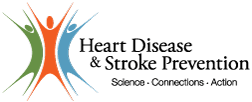DHDSP Strategic Plan

Our Vision
A heart-healthy and stroke-free world.
Our Mission
To serve as the nation’s public health leader for achieving cardiovascular health for all and for eliminating the disparities in the burden of heart disease and stroke
Our Values
- Accountability
- Collaboration
- Communication
- Integrity
- Leadership
- Respect
- Service
Our Strategic Imperative
Lead the nation’s public health efforts in achieving Healthy People 2010 heart disease and stroke goals:
- Prevent risk factors for heart disease and stroke.
- Increase detection and treatment of risk factors for heart disease and stroke.
- Increase early identification and treatment of heart disease and stroke.
- Prevent recurrences of heart attacks and strokes.
Our Core Functions
We are committed to being good stewards of public funds. We use the best science and resources available to develop interventions and programs that prevent, detect, and treat heart disease and stroke regardless of gender, disability, race, ethnicity, age, or socioeconomic status.
Resource Management
We promote integrity and accountability in all administrative transactions. We work to ensure that our recruitment, retention, and training policies sustain a highly skilled and diverse workforce.
Programs
We provide funding, technical support, and resources to state health departments, tribes, and other partners to increase their capacity to eliminate health disparities and prevent heart disease and stroke throughout the lifespan.
Partnerships
Our partnerships with government agencies, states, public and private organizations, and academic researchers allow us to maximize our collective resources in promoting heart-healthy and stroke-free communities.
Research
We engage in applied research to support evidence-based practice. Through our research, science translation, and resource development we help state and national health agencies implement public health strategies to address the burden of heart disease and stroke.
Surveillance
We track trends in cardiovascular risk factors and diseases and document differences in their distribution by age, gender, race/ethnicity, socioeconomic status, and geographic location. We analyze data patterns to identify groups of people most at risk of cardiovascular disease. We share these findings with our many partners and collaborate in applying public health strategies to improve cardiovascular health.
Evaluation
We evaluate programs, policies, and interventions regularly to ensure they are working as planned and producing the intended results.
Our Goals and Strategies
Goal 1: Prevent risk factors for heart disease and stroke
Strategies:
- Increase public awareness of the preventability of heart disease and stroke risk factors.
- Enhance collaboration within the CDC, with federal/state/local agencies and with non-governmental organizations to mobilize prevention efforts.
- Identify, evaluate, and disseminate strategies to prevent risk factors for heart disease and stroke, including adherence to guidelines.
- Promote surveillance activities to measure the incidence of heart disease and stroke risk factors across the life stages.
- Identify and address at-risk populations to prevent disparities associated with heart disease and stroke risk factors.
- Improve and encourage policies and systems that promote heart-healthy behaviors and environments.
Goal 2: Increase detection and treatment of risk factors for heart disease and stroke
Strategies:
- Increase availability of preventive services, specifically lifestyle interventions, screenings, and appropriate medicines.
- Identify populations experiencing disproportionately high rates of risk factors for heart disease and stroke and implement public health strategies to eliminate these disparities.
- Identify, evaluate and disseminate strategies for implementation and adherence to guidelines for detection and treatment of heart disease and stroke risk factors.
Goal 3: Increase early identification and treatment of heart disease and stroke
Strategies:
- Increase capacity to monitor and address disparities and outcomes.
- Improve quality of care for people who have suffered a heart attack or stroke:
- Promote public health policies that foster coordinated systems of care from recognition of symptoms through successful rehabilitation.
- Identify, evaluate, and disseminate strategies for early identification and treatment of heart attacks and strokes (e.g. awareness, timely action, transport, quality of acute care).
- Increase timely delivery of affordable, comprehensive treatment of heart attacks and strokes, especially among those experiencing disparities.
- Increase public awareness of the signs and symptoms of heart attacks and strokes.
Goal 4: Decrease recurrences of cardiovascular events.
Strategies:
- Increase capacity to monitor, track and address disparities among people living with cardiovascular disease, including quality of life issues, adherence to guidelines, costs, economic indicators, functional status, and risk of developing mental incapacity.
- Accelerate the translation of evidence-based science and guidelines.
- Overcome barriers to preventing recurring events and long-term care by working with health care professionals and community organizations to reach people where they live, work, and play.
- Increase availability of services to prevent recurring cardiovascular events, focusing on the public health perspective.
Goal 5: Foster a skilled and engaged public health workforce to address heart disease and stroke.
Strategies:
- Increase skills and capacity of the public health workforce to prevent heart disease and stroke:
- Promote multiple methods to enhance skills and staff capacity.
- Promote a diverse workforce at all levels, including leadership.
- Promote recognition of excellence in the public health workforce to prevent heart disease and stroke.
- Promote collaboration across the public health workforce to prevent heart disease and stroke.
- Create and maintain a positive Division work environment that promotes the following attributes:
- Respects and values cultural, educational, and professional diversity.
- Promotes a variety of learning opportunities to support professional staff development and skill building.
- Celebrates success.
- Provides a healthy physical environment.
- Provides effective systems, procedures, and communications to enhance work performance.
- Provides responsive management.
